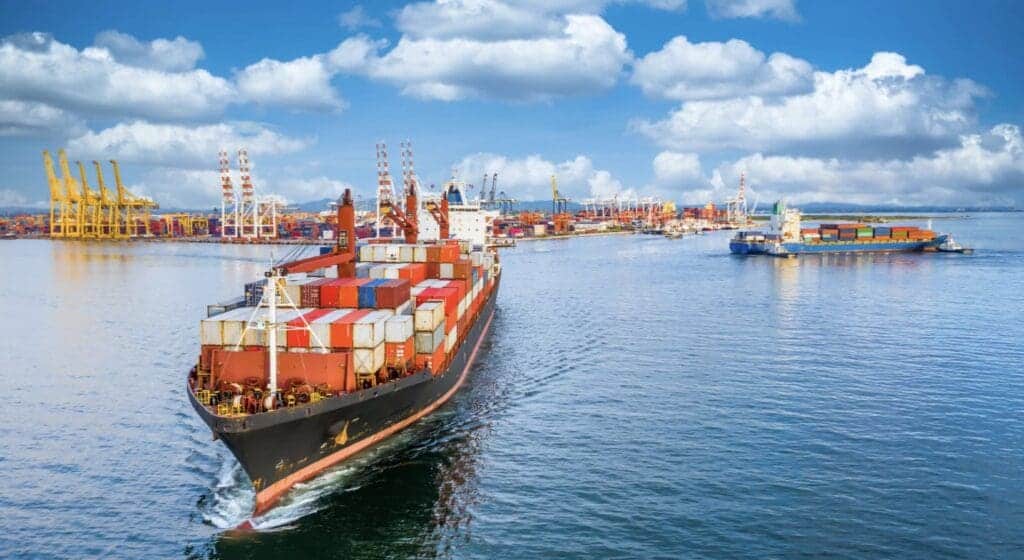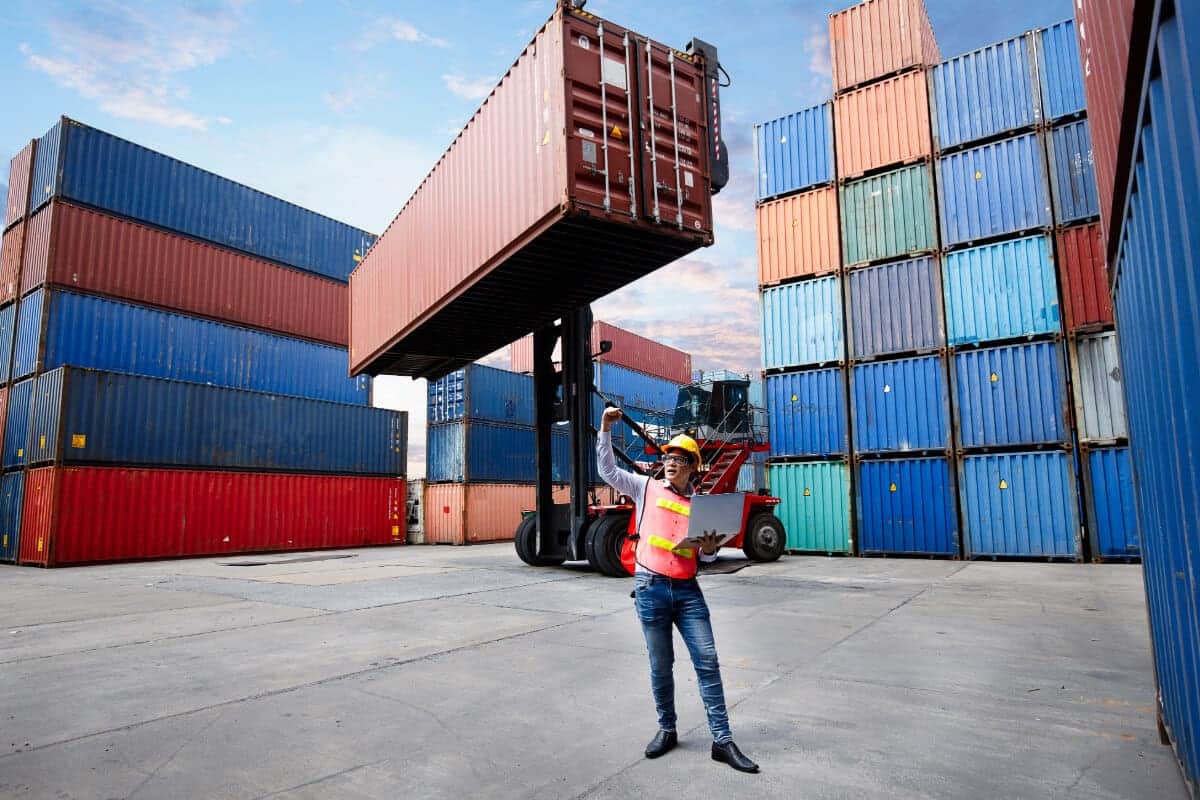In an era where global supply chains are the lifelines of our economic framework, building resilience within these complex networks is more than just a strategic initiative—it’s an imperative for survival. From unforeseen global pandemics to geopolitical unrest, the ripple effects of disruptions can be profound and far-reaching.
Our discourse opens a window into the quintessential strategies that fortify supply chains against the unpredictable tides of global commerce. Through a granular analysis of diversification, technological prowess, and meticulous risk management, coupled with the cultivation of robust partnerships and operational agility, we uncover the pillars that can uphold supply chains against the multifaceted challenges of the 21st century.
Table of Contents
- Diversification of Supply Sources
- Investment in Technology and Automation
- Robust Risk Management Strategies
- Building Strong Relationships and Collaboration
- Agility and Adaptability in Operations
- Related Content
Diversification of Supply Sources
The Unsung Hero in Business: How Diversification Strengthens Supply Chains
In the hustle of the business world, diversification is one golden strategy that stands out amidst times of uncertainty. Much like spreading one’s investments to mitigate risk in the financial portfolio, diversification in supply chains acts as a buffer against the inevitable disruptions. It’s the armor that businesses don to protect against the blows of supply chain volatility – be it from natural disasters, global pandemics, or geopolitical tensions.
Think of diversification as the savvy entrepreneur’s chess move: It’s strategic, calculated, and, when done right, it can safeguard a business’s lifeline—its supply chain. With a diversified supply chain, companies are no longer at the mercy of single sources of products or components. Instead, they’re empowered with options, alternatives, and backup plans.
Diversification extends beyond just having multiple suppliers. It incorporates geographic spread, transportation options, inventory management, and the flexibility of product substitutes. When a supply chain is diverse, it hedges the risk of relying on one region or mode of transport. Should a natural disaster strike at one locale, a well-diversified supply chain swiftly shifts gears, tapping into other regions unaffected by the calamity.
Furthermore, this strategy is not just for the big players. Small businesses, too, can harness the power of diversification. It could be as simple as sourcing materials from local suppliers or as intricate as ensuring that the logistical footprint spans several transportation methods. Agility here is crucial; when suppliers fail to deliver, a diversified network swiftly moves to plan B, ensuring business operations run smoothly.
Leveraging technology is another ace in the sleeve when diversifying supply chains. Real-time data analytics and AI provide insights that identify potential risks early on, allowing businesses to respond proactively rather than reactively. After all, in a world that never sleeps and constantly changes, staying ahead is not just favorable—it’s imperative.
However, let’s not paint an overly rosy picture here. Diversification is no child’s play. It requires intricate planning, a thorough understanding of the business landscape, and a keen eye for recognizing the right partners. But for those who nail it, the results are clear: a robust, resilient supply chain that stands unwavering in the face of adversity and keeps the wheels of commerce turning.
Companies embracing diversification understand one crucial thing – change is the only constant in business. Therefore, having a supply chain that is too rigid or reliant on a single source is akin to building a house on sand. It may hold for a time, but when the tides of disruption come rolling in, only those built on the solid ground of diversification will stand firm.
Ultimately, diversification is more than a strategy; it’s a mindset. It’s a commitment to resilience, a pledge to sustainability, and a proactive approach to business continuity. Embrace diversification, and let it be the sinew that reinforces the structure of your supply chain, ensuring that when the unforeseen hits – and it will – your business isn’t just surviving, it’s thriving.

Investment in Technology and Automation
Tech Innovation: The Catalyst for Resilient Supply Chains
In the dynamic arena of modern business, technological innovation is not just a luxury; it’s the lifeline that ensures supply chains survive and thrive amidst unforeseen challenges. Picture a supply chain as adaptable as water, seamlessly molding to changing market demands and disruptions. That’s the role of cutting-edge tech in today’s industrial ecosystem.
One might ask, how exactly does innovation bolster supply chain resilience? Well, envision an intricate network of sensors embedded throughout the logistics framework. These aren’t ordinary sensors; they’re part of the Internet of Things (IoT), continuously feeding vital information back to the nerve center. Here, tracking every item with pinpoint precision becomes possible, and inventory levels are managed with a prescience that would make Nostradamus take notes.
But it doesn’t stop there. In this accelerated era, artificial intelligence’s (AI) prowess is employed to predict and prescribe solutions for potential supply blockages. Consider AI the maestro of a symphony, orchestrating various supply chain elements to perform in perfect harmony. AI algorithms analyze patterns, glean insights from vast swathes of data, and anticipate disruptions before they hit the first domino in the chain.
Moreover, we must herald the unsung hero of supply chain management—blockchain technology. With its indelible ledger and pinpoint accuracy, Blockchain is revolutionizing trust and transparency in the system—goodbye, fraud and errors; hello, accountability and efficiency.
Striding into the limelight is also the promising field of robotics and automation. Where humans tire, machines persist, ensuring uninterrupted workflow and precision in tasks once prone to the pitfalls of human error. From packing to palletizing, automation ensures that every supply chain step is optimized for speed and efficiency.
In the quest for resilience, let’s not forget the critical role of advanced analytics. Businesses can leverage predictive analytics to turn information into actionable insights. This advantage allows stakeholders to make smarter decisions, adapting to market conditions with the acumen of seasoned chess players.
For the smaller players, the cloud levels the playing field, offering enterprise-grade tech solutions that were once the exclusive domain of conglomerates. Regardless of size, every player can tap into sophisticated supply chain management tools without the daunting investment it once entailed.
The marriage of digital twins with supply chains is another match made in heaven. These virtual replicas simulate the physical supply chain, testing various scenarios. By grappling with crisis simulations in a digital sandbox, companies can brace themselves for actual turmoil in the real world.
Diving deeper into innovation, we see advanced materials redefining product durability and logistics. Imagine materials that can withstand extreme conditions, making the perilous journey of goods less fraught with risk, or packaging that is smart enough to report its condition and environment in real time.
However, innovation is not without its tribulations. Integrating new technology requires substantial investment, not just in monetary terms but also in training and development. Moreover, transitioning to a tech-centric supply chain is a cultural shift, requiring all stakeholders to embrace the digital revolution wholeheartedly.
As markets grow more competitive and customer expectations skyrocket, the importance of tech in fortifying supply chains cannot be overstated. The above innovations are not exhaustive but indicate a trend where technology is the keystone of resilient, responsive, and robust supply chains. It’s about time businesses harness the formidable power of tech innovation – not just to survive the next disruption but to redefine the fabric of supply chain management.

Robust Risk Management Strategies
Amplifying Agility: The Case for Dynamic Risk Management in Modern Business
In the fast-paced arena of modern business, volatility is not a question of if, but when. Market conditions twist and turn with the times, currencies fluctuate, consumer preferences evolve, and let’s not even start on the regulatory landscape. This is where dynamic risk management doesn’t just enter the stage but becomes the lead actor in the play of business continuity.
Dynamic risk management is the corporate equivalent of having a Swiss Army knife in your back pocket; it empowers a business to adapt to market changes swiftly and effectively. Picture this: regulation shifts, and a firm’s once-compliant product needs a rapid redesign. Without dynamic risk strategies, you’re looking down the barrel of potential revenue loss and brand damage. However, with an adaptive approach, switches can be made, losses minimized, and operations continue humming.
Consider unforeseen events that strike out of the blue like lightning. Take, for example, a natural disaster that cripples a key player in your supply chain. Static risk management might have you scrambling for a solution, suffering downtime, and watching helplessly as profits nosedive. In contrast, dynamic risk management has contingency plans, like a firefighter poised by the alarm, to keep your business wheels turning with minimal interruption.
Diving deeper, financial markets perfectly illustrate the grand stage where this approach shines. Currency risks, interest rate fluctuations, and commodity price swings are just some of the market forces that can become a strategic playground for a business equipped with dynamic risk management tools. Flexible hedging strategies, for instance, allow for protective measures that adapt to market conditions, locking in costs and preserving the bottom line.
The adoption of technology plays a pivotal role here. Predictive analytics, fueled by machine learning algorithms, churn through massive datasets to spot potential risks on the horizon. It’s like having a crystal ball with data-driven insights instead of mystical murk. This technology allows businesses to forge strategies around these predictive models, giving them a jump on addressing risks before they even materialize.
Human capital is not to be overlooked either. Cultivating a workforce that prioritizes risk-aware decision-making infuses resilience throughout the organization. Training and investing in personnel to identify, assess, and respond to risks ensures that the business is buoyant, capable of riding the waves rather than being engulfed by them.
To sum it up, the static risk management of yesterday’s economy will no longer suffice in today’s mercurial market. Businesses need dynamic risk management strategies—an integrated, agile approach that anticipates and acts, preserving and promoting business vitality. It’s the difference between having a fire extinguisher and knowing that fire is hot. One prepares you to deal with the blaze; the other leaves you burned. So, when the inevitable risks come knocking, will your business have the dynamic defenses it needs to open the door confidently?

Building Strong Relationships and Collaboration
Navigating the Nexus of Partnerships and Supply Chain Resilience
In the ever-shifting landscape of global commerce, the robustness of a supply chain can make or break a business’s bottom line. It’s not just about having a plan B; it’s about weaving a tapestry of reliable partnerships that can stand firm against market turbulence.
At the core of supply chain resilience lies the strength of partnerships. From symbiotic supplier relationships to strategic distribution allies, sharing risks and pooling resources offers a bulwark against the unexpected. These strategic alliances create a buffer when the market takes a nosedive, shielding businesses from the full brunt of economic shocks.
Take it from seasoned entrepreneurs: Supplier collaboration is not just a handshake deal. It’s the co-creation of contingency plans, where mutual trust and shared objectives steer the ship through choppy waters. When a key player encounters a hitch, their partner’s readiness to pick up the slack ensures continuity, minimizing downtime.
On the flip side, transportation partnerships exemplify logistical synergy. With a joint venture mindset, firms can reroute goods with clockwork precision, sidestepping congestion and capitalizing on less trodden paths. It’s about having a chessboard of moves ready when the primary route hits a snag.
Inventory partnership strategies involve a delicate dance between overstocking and meeting demand. With joint inventory pools, partners can shuffle stock between them, fulfilling orders from the closest node. This ballet of inventory cuts down the lead time and slashes hefty storage costs.
And who says small players can’t compete with industry titans? By building coalitions, SMEs tap into a shared reservoir of resources, leveling the playing field. This collective might empower them to negotiate better terms, streamline processes, and create a supply chain that punches above its weight.
By marrying technology with partner networks, businesses evolve into resilient entities. Sharing real-time data across the alliance keeps every link in the chain privy to the operation’s pulse. It means stepping ahead, anticipating ripples, and adjusting sails before the storm hits.
Yet, as with all ventures, the road to partnership-driven resilience is sprinkled with hurdles. Merging distinct corporate cultures, goals, and systems demands finesse and an unyielding commitment to the common good. The seamless integration of diverse entities into a cohesive unit is the hallmark of a partnership designed to endure.
Ultimately, this collective fortress of partnerships is not a luxury but a strategic imperative. When businesses band together, they craft a supply chain that’s both resistant and adaptable. An ecosystem in which every entity, big or small, finds strength in numbers and agility in alliance.
The takeaway? In modern commerce, enduring success is cultivated through collaborations that bolster and breathe flexibility into the supply chain. It’s about forging bonds that turn collective resilience into a competitive edge. After all, in a world where only the adaptable survive, the strongest links bind together.

Agility and Adaptability in Operations
Efficiency is the beating heart of any supply chain—without it, commerce would stumble and falter. Yet, when the unpredictable occurs, efficiency alone is not enough. Enter operational agility, a key component for supply chain resilience that’s too important to overlook. It’s not just about survival—it’s about thriving in a world where change is the only constant, and supply chains must be as adaptable as they are efficient.
Operational agility is about being nimble and responsive. It can pivot quickly in response to changing market demands or supply shocks. Imagine a game of financial Tetris where blocks of supply and demand are continually shifting—operational agility is having the dexterity to rotate and maneuver these blocks without letting your tower of business continuity topple over.
Strong foundational elements must be in place to achieve this agility—elements like adaptable processes, proficient training, and a culture that rewards innovative thinking and rapid decision-making. Aligning these elements ensures that when the supply chain is threatened, businesses can bounce back with the grace of a well-rehearsed dance troupe, each step and twirl measured and executed to perfection.
This agility often manifests through adopting advanced planning systems and tools that facilitate supply chain visibility. Think of it as having a bird’s-eye view of the playing field, with each piece of the logistical puzzle tracked and monitored. When disruptions occur, this visibility allows for the swift identification of problems and even swifter action.
The wonder of modern software solutions cannot be overstated—they provide scenario simulation capabilities that arm decision-makers with the foresight to anticipate and mitigate risks. This means that strategies are already in play even before a problem becomes a crisis, allowing businesses to sidestep potential pitfalls deftly.
Distributed manufacturing strategies are also part of this agile approach, decentralizing production to avoid bottlenecks. When one path is blocked, an agile operation already has multiple routes charted and can switch course easily with a seasoned navigator, ensuring that supplies reach their destination without delay.
Responsiveness also necessitates a commitment to continuous improvement—a willingness to refine and enhance processes in the quest for a supply chain that endures and evolves. It’s the difference between a business that withstands a storm and learns to dance in the rain.
Furthermore, scalability is critical. An agile operation intelligently calibrates its resources to match demand, scaling up or down with the seamless precision of a finely tuned instrument. This cushions the business against fluctuations and capitalizes on new opportunities.
At the core of operational agility is not just technology or processes—it’s people. Empowering teams to make decisions and fostering a mindset that embraces change enables an agile supply chain. With this ethos, each team member becomes not just a cog in a machine but a dynamic force capable of steering the ship through turbulent waters.
Operational agility is the key to unlocking supply chain resilience. It gives businesses the flexibility to alter their course and speed in the face of setbacks and allows them to adapt and advance while others may stall. It’s not just about being fast—it’s about being ready, reactive, and resilient, with the ability for quick switches and sharp turns that keep the flow of goods—and success—constant.

As we navigate the ever-evolving landscape of global markets, the insights garnered from exploring supply chain resilience serve as a beacon for businesses striving to thrive amidst volatility.
The synthesis of diversified sourcing, tech innovation, strategic risk containment, collaborative dynamics, and operational agility constitutes a blueprint for creating supply chains that survive and flourish when faced with adversity. With these strategies, companies can transform potential vulnerabilities into competitive advantages, ensuring sustainability and success in the global marketplace.
Find out more about how Mondoro can help you create, develop, and manufacture excellent home decor and home furniture products – don’t hesitate to contact me, Anita. Check out my email by clicking here or become a part of our community and join our newsletter by clicking here.
Mondoro gives out a FREE Lookbook to anyone interested. You can receive a copy of our latest Lookbook by clicking here.
Listen to our Podcast called Global Trade Gal. You can find it on all major podcast platforms. Try out to listen to one of our podcasts by clicking here.
Subscribe to our Mondoro Company Limited YouTube Channel with great videos and information by clicking here.
Related Content
What Is The Difference Between Supply Chain Management and Logistics?
Supply chain management is about the collaboration and partnerships to get the goods from raw material to the end consumer; it is about the partnerships and collaborations within this supply chain process. Logistics is one part of the supply chain management; logistics is about moving the goods from one place to another. In some instances, the logistics providers will also store the goods and send them on to the end consumer.
You can learn more by reading our blog What Is The Difference Between Supply Chain Management and Logistics? by clicking here.
What Are The Benefits Of Supply Chain Management?
There are many benefits to supply chain management. The benefits of supply chain management include teamwork and collaboration, improved quality control, better efficiency and effectiveness, on-time deliveries, maximization of overhead costs, improved cash flow, risk mitigation, and shipping optimization. All of these areas are greatly helped by proper supply chain management.
You can learn more by reading What Are The Benefits Of Supply Chain Management? by clicking here.
Product Sourcing and Strategic Sourcing Explained
Product sourcing is when you source or look to find a supplier for a product you need. Strategic sourcing is strategically sourcing products. Strategic sourcing is not the lowest purchase price but the lowest overall cost. Product and strategic sourcing are very similar, but strategic sourcing is sourcing with a plan.
You can learn more by reading Product Sourcing and Strategic Sourcing Explained by clicking here.

